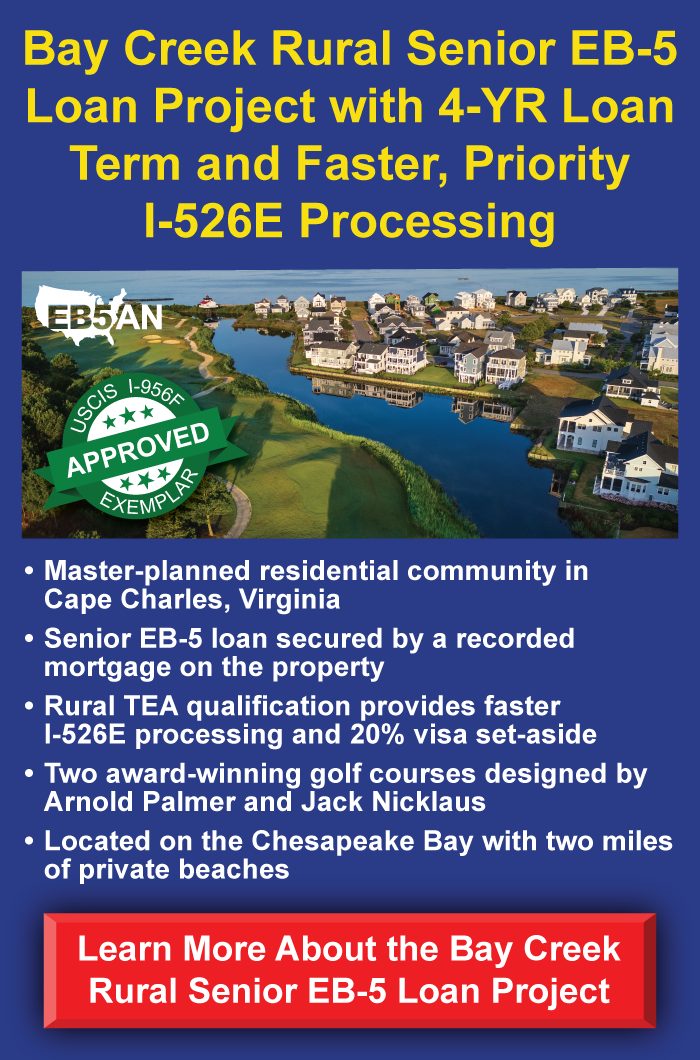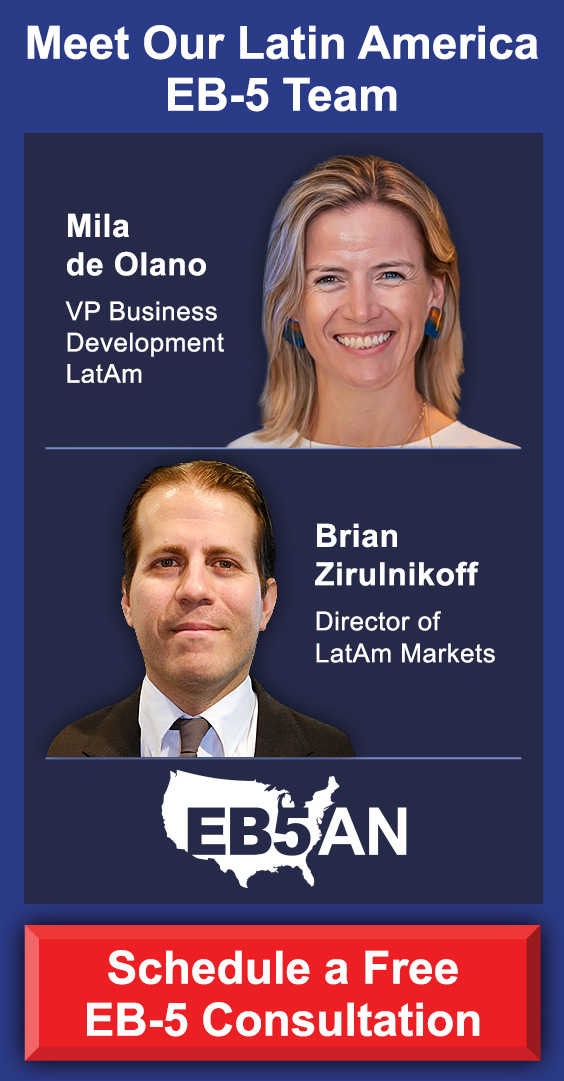With the release of detailed processing data for Form I-526E—covering early 2022 up to January 2025—USCIS has granted the EB-5 industry an unprecedented level of insight into program trends. Indeed, the country- and category-specific filing statistics provide the most accurate snapshot yet of how the EB-5 program is operating under the EB-5 Reform and Integrity Act of 2022 (RIA).
At a high level, the most obvious takeaway from the data is that USCIS is giving ample priority to rural I-526E petitions, with approvals frequently arriving within 12 months.
Urban I-526E petitions, meanwhile, are being processed remarkably slowly.
Even though there is no backlog yet for either the rural or urban category, EB-5 investors in urban projects are nonetheless facing significant delays. These delays are critical—as they wait for adjudication, investors’ career options may change, and minor children on their application could age out when they turn 21.
If you have filed an urban I-526E petition and are faced with a long waiting period, what are your options? And how can prospective EB-5 investors avoid delays before receiving I-526E approval and their initial Green Cards?
In this post, we analyze the stagnant processing of urban I-526E submissions and consider possible approaches for investors stuck in the queue.
Full Webinar and Analysis of I-526E Processing Data
Rural Priority Processing Effectively Halts Urban I-526E Queue
What Is the Expected Timeline for Urban Processing?
Does the Stuck Queue Matter for Your Case?
Would Filing a Mandamus Speed Up the Process?
Consult Experts Before Filing a Mandamus Action
Rural Priority Processing Effectively Halts Urban I-526E Queue
Data covering the period from February 1, 2023, to January 31, 2025, lays bare how USCIS has been adjudicating I-526E petitions under the RIA.
During those 24 months, USCIS processed approximately 967 rural petitions out of a total of 4,095 filed—roughly 24% of rural filings—while adjudicating only 74 urban petitions out of 4,521— or about 1.6% of urban filings.
This equates to an adjudication ratio exceeding 13 to 1 in favor of rural petitions, clear proof that USCIS grants ample priority to rural investors.
Prior to February 2023, USCIS had already shown a tendency to favor rural cases: From April 1, 2022, to January 31, 2025, it adjudicated 1,126 rural petitions compared to just 361 urban petitions, despite urban filings outnumbering rural by roughly 20% during that span.
Once the market and agency procedures adapted fully to the RIA’s new policies for urban and rural filings, including the set-aside categories, the imbalance in processing became even more pronounced. Since February 2023, rural adjudications have steadily climbed month over month, while urban approvals have all but stalled.
In effect, investors filing under the urban category find themselves stuck in an ever-growing queue, as USCIS channels scarce adjudicative resources toward rural cases.
For prospective EB-5 investors weighing the rural versus urban decision, the practical takeaway is clear. Rural I-526E petitions are moving, on average, at rates that suggest adjudication within a year or less, whereas urban petitions linger without a clear timeline. The data makes clear that, as of early 2025, urban investors are watching the queue come to a near standstill, while rural investors continue to progress through adjudications at accelerating rates.
What Is the Expected Timeline for Urban Processing?
Rural processing timelines have fallen into a predictable pattern: Most rural I-526E petitions are adjudicated in under 12 months, with many approvals occurring within eight to ten months of filing—one EB5AN investor even received their approval in 6.5 months. This processing range is evident both in USCIS’s public data through January 2025 and in EB5AN’s own internal tracking of approvals.
But there is no clear timeline for urban I-526E submissions.
Since February 1, 2023, the urban processing queue has remained effectively frozen. With only 74 urban adjudications out of 4,521 filings, the data provides no basis for estimating how long an urban investor might wait. Unlike rural timelines, where monthly adjudication counts create a visible slope toward resolution, urban numbers are so sparse that no trend line can be drawn.
The best that can be said is that—without an unforeseen policy change, such as increased staffing, policy directives, or targeted initiatives, or a legal challenge—urban petitioners should prepare for a significant wait—potentially extending well beyond the one-year (or less) mark common to rural cases.
It is important to note that this lack of movement does not stem from a sudden surge in filings—urban receipts have actually declined as market preference has shifted toward rural. Instead, urban delays are the direct consequence of USCIS reallocating resources away from the urban category.
Crucially, there is no published processing time for urban I-526E under the RIA. Investors and their immigration counsel must therefore acknowledge that, for the time being, the urban queue constitutes an open-ended waiting period rather than a process with predictable intervals.
Put simply, urban investors should assume that, without extraordinary measures like mandamus litigation, their I-526E adjudication may remain stalled indefinitely.
Does the Stuck Queue Matter for Your Case?
The answer to this question depends largely on whether you already live in the United States or not.
EB-5 investors already residing in the United States can concurrently file for adjustment of status, employment authorization (EAD), and an advance parole (AP). With these documents, investors will be able to live and work freely in the U.S. and travel internationally while their I-526E petitions are adjudicated.
For such investors, the primary consequence of a stalled I-526E is a delay in receiving the Green Card itself. In practice, these investors retain their legal right to live and work in the U.S. under their EAD and travel using their advance parole document, mitigating the impact of a slow I-526E adjudication.
By contrast, investors outside the United States face more pressing delays. Without an adjudicated I-526E, they cannot proceed to consular processing to secure their Green Cards—and therefore cannot live and work in the U.S.
As urban receipts continue to outpace adjudications, the queue deepens, and the prospect of ever approaching a visa appointment can become increasingly delayed. In this scenario, the stagnant I-526E queue prevents an EB-5 investor and their family from entering the United States in any immigrant capacity.
For those whose immigration strategy hinges on timely relocation—perhaps to begin business or career activities—the urban processing timeline can be a significant obstacle.
Even though an official backlog has not yet formed for the urban category, investors outside the United States should keep the following in mind: Filing while the category remains current secures a place in line but does nothing to guarantee movement in the queue or preclude future cut-off dates.
Deciding whether the slow urban queue is an acceptable delay or not depends on each investor’s immigration goals, location, and timeline.
Investors who are already in the U.S. on a different visa, such as an H-1B or F-1, might be okay with the long wait since they can file for adjustment of status. Conversely, investors who want their Green Cards quickly will need to explore alternative strategies—most notably, mandamus litigation.
Would Filing a Mandamus Speed Up the Process?
A writ of mandamus is a federal lawsuit compelling USCIS to adjudicate an unreasonably delayed petition.
Under federal law, when a delay or agency inaction inflicts harm on a petitioner, the courts can issue a writ ordering USCIS to reach a determination. For urban I-526E investors watching the queue stagnate, mandamus litigation may appear to offer the only viable path to resolution.
The typical mandamus process begins with an attorney notifying USCIS of the intent to sue and requesting amicable adjudication. This “pre-suit” letter often carries weight: For a petition that has sat idle well beyond USCIS’s own published processing times, the agency frequently opts to adjudicate rather than face litigation.
If USCIS fails to respond, the formal complaint is filed in the local U.S. district court—ideally in the district where the plaintiff resides or in the District of Columbia, though many practitioners advise avoiding D.C. on account of its heavy workload.
After filing, the parties enter settlement negotiations; a trial is rare, as USCIS typically settles by adjudicating the petition before a judge is drawn into the merits.
The timeline for a mandamus action is variable. No hard rule dictates when to file a mandamus, but investors whose petitions have been delayed longer than USCIS’s published processing times have greater leverage. A petition that is two, three, or more times beyond published benchmarks is far more likely to prompt agency action once a mandamus notice lands on the adjudicator’s desk. For many practitioners, the sweet spot for filing is one and a half to two years of waiting without substantive review.
Notably, a writ of mandamus does not direct USCIS on the substance of its decision; rather, it simply forces the agency to make an adjudication.
Settlement outcomes can range from an outright approval to issuance of a request for evidence (RFE) or a notice of intent to deny (NOID). Even when the decision is unfavorable, the mandamus delivers certainty: An RFE or NOID triggers a defined response period, while an adjudication—approval or denial—brings finality. USCIS may also respond by filing a motion to dismiss or motion for summary judgment, arguing that its delays are within its discretion or that the petitioner is seeking to “jump the line.”
But historically, most mandamus suits have prompted USCIS to adjudicate rather than litigate, particularly when the delay is clearly unreasonable.
Investors should weigh a mandamus’s potential benefits against its risks. On the plus side, a successful mandamus can force USCIS to adjudicate an investor’s petition and thereby enable them to seek either consular processing or adjustment of status to proceed. It can also yield an RFE, clarifying the evidentiary record and narrowing issues in dispute.
Crucially, for investors outside the U.S., a mandamus may be the only path to securing an immigrant visa appointment in a reasonable timeframe.
On the other hand, a mandamus entails legal fees, court costs, and the risk of accelerating an unfavorable outcome. If a petition has compliance issues—such as questionable source-of-funds documentation or project concerns—a mandamus may prompt USCIS to issue a denial that might otherwise have been delayed.
Moreover, investors with children nearing age 21 should consider the following: A quick adjudication could lock in a priority date but begin the child’s age-out clock earlier than a slower, natural processing cycle might.
Additionally, applicants from countries subject to visa retrogression, like China and India, may gain little from a mandamus if the underlying visa is unavailable even after approval.
Consult Experts Before Filing a Writ of Mandamus
Because mandamus suits are complex and outcomes hinge on petition-specific facts, investors are strongly advised to consult experienced immigration counsel before filing. An attorney can assess whether the petition’s quality, the extent of the delay, and the investor’s personal circumstances align to make a mandamus a prudent strategy.
When urban processing is stuck and no policy relief is in sight, a mandamus may emerge as the only realistic means of advancing a stalled I-526E—but it is not a guarantee of success.
In the landscape shaped by the RIA’s rural priority processing, urban investors unwilling to endure an indeterminate wait must carefully weigh the potential for a mandamus suit against its risks. For some, the path forward will lie in litigation; for others, waiting or pivoting to a rural investment may offer a more predictable route to a U.S. Green Card.
For personalized guidance on your EB-5 immigration strategy, schedule a free consultation with EB5AN.







